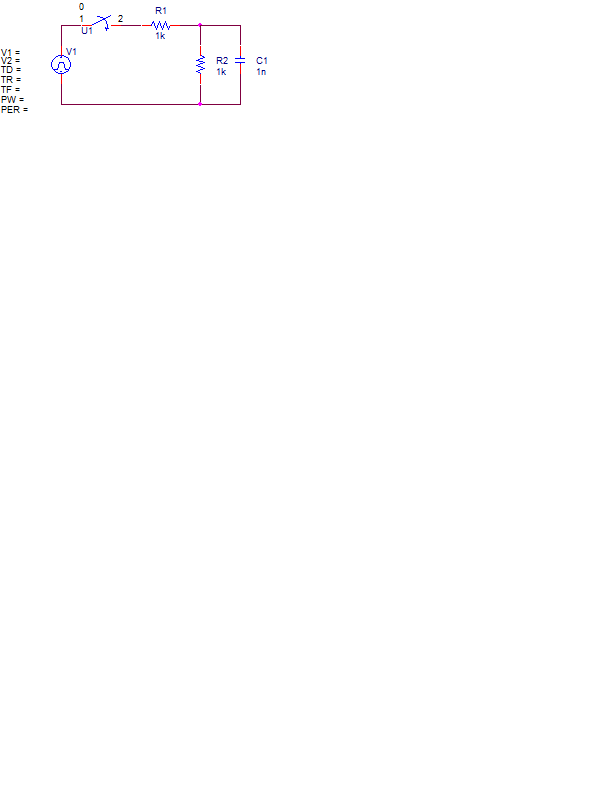Hello
I would like to understand the charge curve on C1. I would like a transfer function show the relationship of Vo(voltage on C1) and t.
And for this charge signal, is it possible to find a op amp to follow the signal.
Thanks!

This thread has been locked.
If you have a related question, please click the "Ask a related question" button in the top right corner. The newly created question will be automatically linked to this question.
Hello
I would like to understand the charge curve on C1. I would like a transfer function show the relationship of Vo(voltage on C1) and t.
And for this charge signal, is it possible to find a op amp to follow the signal.
Thanks!

Hello,
Below is my solution. Including every step would make things very long. So, I have simplified down to an ordinary differential equation and then assumed a solution form. You can search for solution forms online and come across the same format.
As you can see, the equation has a similar form as the simple RC filter just with some more complicated coefficients. This seems reasonable to me. I have checked my work, but you may wish to double check it as well since it is long and involved.
For your question about using an amp to follow the signal, I am not sure I completely understand your question. Would you mind asking again in a different way? Thanks!

Regards,
Daniel
To be clear, this is the final answer at the bottom of the work. What I assumed is that we know the solution form for the differential equation. This way, we don't have to solve the differential equations from scratch, which would make things more tedious.
Regards,
Daniel
Hello Daniel
Thanks a lot for your support. After I check your paper. I think the function should be

Could you check it? Thanks!
Hi Kai,
Yes, a good electrical engineer would not be so silly as to deal with the differential equation mess and would use his handy Laplace transformation table! I am afraid I have been exposed.
Thanks for confirming. I think your answer with the simplified time constant is a bit more clean. Have a nice weekend!
Regards,
Daniel
Thanks Daniel and Kai
It is amazing to see the different method to solve the problem with same result. For me, no silly tool, only right tool.
Thanks again for the support
Hi Daniel, hi User,
doing the Laplace-Transformation looks like overkill here and the approach Daniel shows leads to the solution much faster. But when the circuit becomes more and more extensive, doing the Laplace-Transformation is the far better way.
Today my preferred method when only being interested in the final solution is using a simulator like TINA-TI, LTSpice, or else. So from to time I'm happy to have the opportunity to go the rocky road
Have a nice weekend too!
Kai